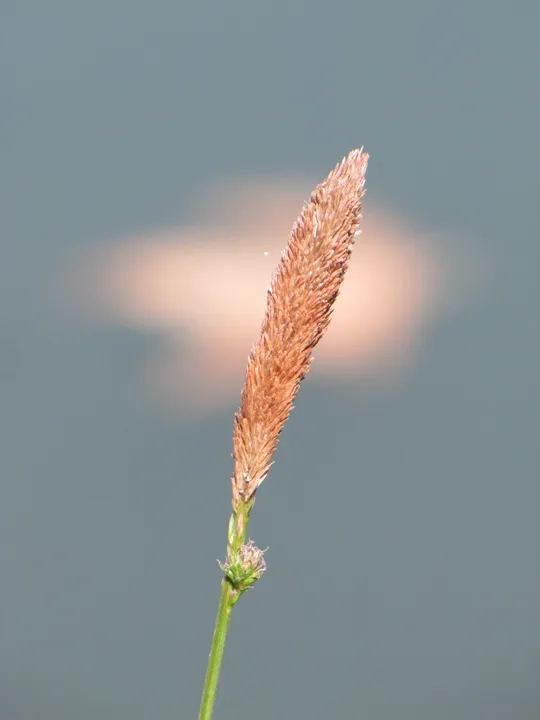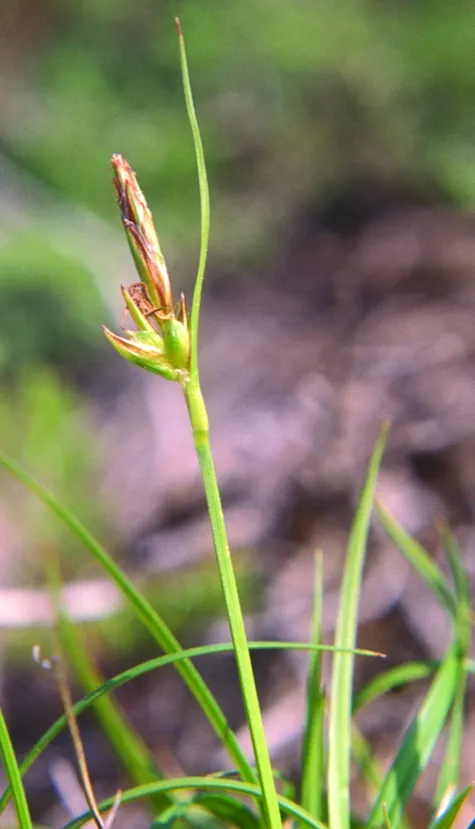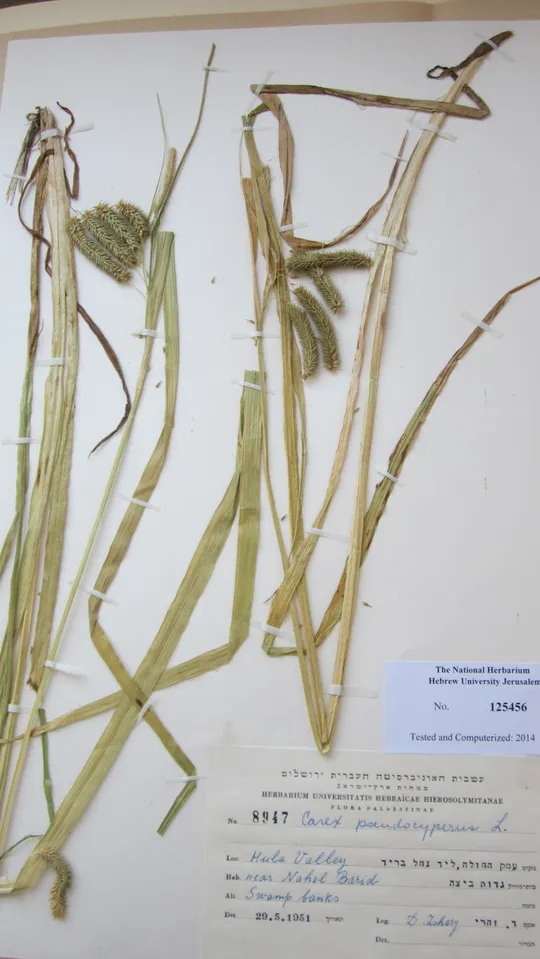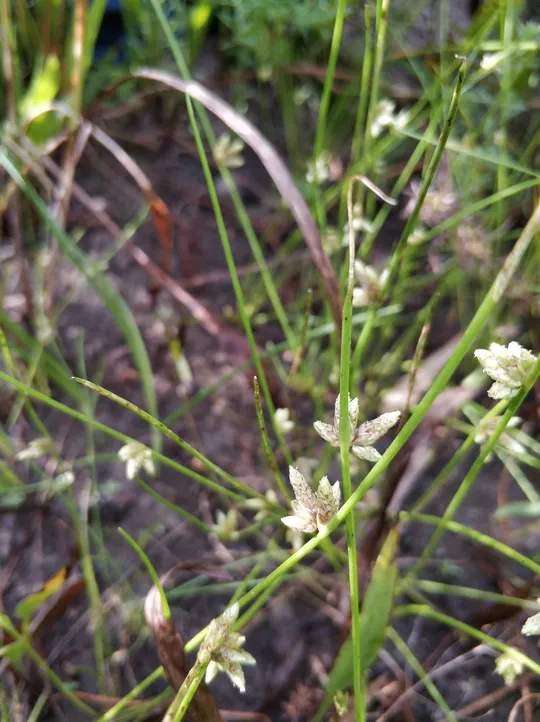Hispid Sedge, Hairy Sedge
Carex hispida
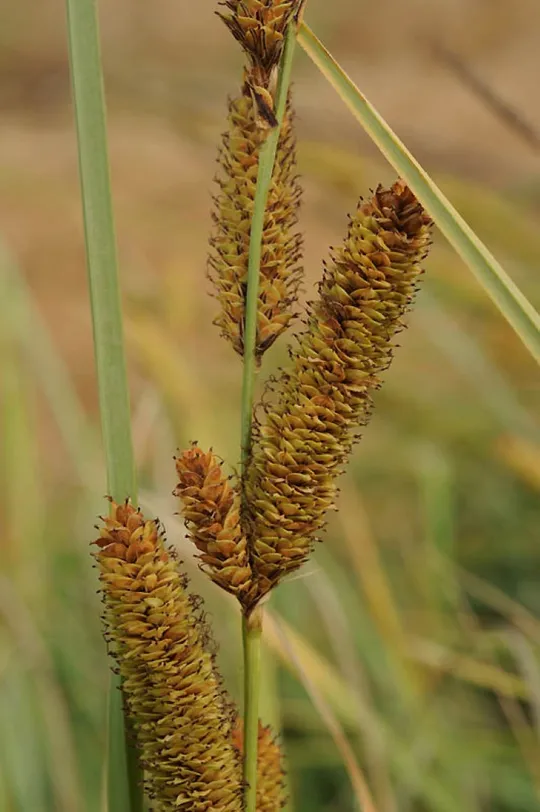
Carex hispida currently grows
in only two regions – the Jezreel Valley and the Sharon, on one site in each
region, a total of two sites, although there may be four sites. In the Jezreel
Valley, C. hispida is found in HaKibbutzim Stream and in the Sharon between Hadera and Gan
Shmuel, but is extinct at several other sites in both these regions. In the past,
it grew in five additional regions in which it is now extinct: the Hula Valley,
Acre Valley (En Afek, Kfar Masaryk), Carmel Coast (Kvara swamps), the Carmel
and Pleshet (Wadi Rubin and the vicinity of the Yarkon).
Moist,
occasionally shaded canals, riverbanks and marshes.
The genus Carex consists of about 800 species
most of which grow in poorly drained wetlands. 86 species grow in Turkey and about a hundred in the Middle East,
numbers that indicate the species richness of the genus in our region. The genera
Carex and Cyperus are the two most common among the wetland
Cyperaceae and the distinction between them is difficult.
In the genus Carex, unlike the genus Cyperus,
the spikelet pales are not arranged in two overlapping parallel columns. In
addition, the spikelets are arranged in cylindrical inflorescences, unlike the
flattened inflorescences in the species of the genus Cyperus. In
general, the genus Carex is a Northern genus adapted to low
temperatures, while the genus Cyperus is a tropical genus adapted to
equatorial tropical and subtropical climates. There are 12
species in Israel, most of them associated with bodies of water – rivers,
marshes and the edges of ponds, although a few species also grow in woodland
and scrubland and one species is from the desert – C. pachystylis. The
genus Carex is divided into two groups of species: in one group the male
and female flowers are found on the same inflorescence (e.g., in Israel: C.
otrubae and C. divisa); and in one group the male and female flowers
are found in separate inflorescences. C. hispida belongs to this group. C. hispida is close to C. flacca, a species characteristic of moist
habitats in northern Israel. However, it differs in its fruit that is not
ciliate or toothed on its upper part, and in the ovate glumes in the female flowers.
·
The status of Carex hispida
is a dramatic indicator of the situation of wetlands habitats in Israel – their
disappearance and the decline of their water quality. The species disappeared
from most of the regions in which it grew in the past, and the number of its sites
has decreased to less than a quarter of those known previously.
·
Wetland
desiccation, disappearance of marshes and canals and the pollution of their
water led to the extinction observed and are a threat to the remaining
populations.
·
The sites where
C.
hispida survived are not found in nature reserves. HaKibbutzim Stream is a
proposed but not a declared nature reserve.
·
C. hispida has a broad
global distribution and is not globally endangered.
HaKibbutzim Stream in the eastern Jezreel Valley should be
formally declared a nature reserve. Carex hispida plants should be acclimatized in water canals near the Zeta Swamp in
the Sharon and in the Agamon HaHula.
Carex hispida is a widely distributed plant that grows throughout Europe and North
Asia, the Mediterranean Basin and the Middle East.
Carex hispida is
a rare perennial marsh grass that survived in a small number of regions and
sites in Israel, compared to the past, as a result of the decline and
deterioration of wetlands in the country.
Current Occupancy Map
| 1000 squre meter pixel | 5000 squre meter pixel | 10000 squre meter pixel | |
|---|---|---|---|
| number of observations | 0 | 0 | 0 |
| in total pixels | 0 | 0 | 0 |
| Family | Cyperaceae |
| Classification | On the endangered species list |
| Ecosystem | Mediterranean humid |
| Chorotype | Mediterranean |
| Conservation Site | HaKibbutzim Stream |
| Rarity |
1
3
6
|
|---|---|
| Vulnerability |
0
3
4
|
| Attractiveness |
0
0
4
|
| Endemism |
0
0
4
|
| Red number |
1
3.7
10
|
| Peripherality | N |
| IUCN category | DD EW EX LC CR EN VU NT |
| Threat Definition according to the red book | Vulnerable |
 Based on:
Based on:
